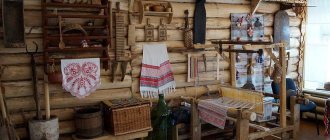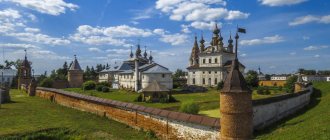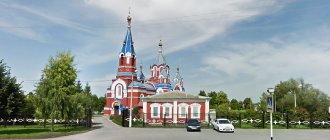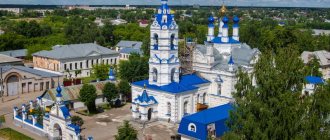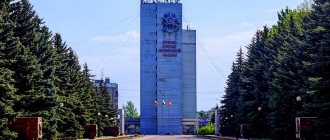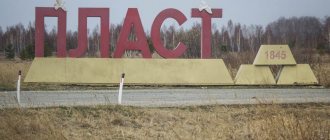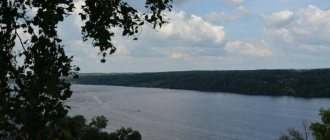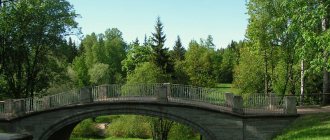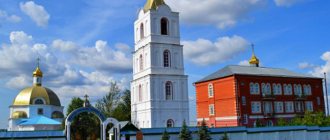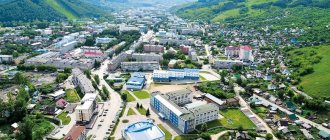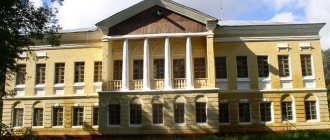Goethe himself dreamed of visiting this city, because here, according to him, uneducated peasants created divine images. This small village in the Ivanovo region is famous for its master painters. Starting from the 14th century, folk crafts flourished here and icon painting began. Today it is included in the mandatory excursion program to the cities of the Golden Ring of Russia and is very popular among tourists. All this is Palekh. Let's look at its main attractions with descriptions and photos.
What to see in Palekh in 1 day – TOP-3
To see all the sights of Palekh and visit all the exhibitions, one day is very little - you need at least a week. Therefore, if you are short on time, you can pay attention only to the most important city objects. They, like nothing else, fully convey the entire originality of the ancient town.
House of Crafts
- Address: st. Lenina, 42.
It was opened in 1991 and today belongs to the municipality. The gallery is located in one of the ancient buildings, which once belonged to the famous restorer and icon painter N.M. Sofonov, one of the suppliers of the Court of His Imperial Majesty. This house housed workshops and a school for artists.
To this day, Sofonov’s personal rooms have been preserved unchanged, and the façade of the building is still decorated with forged metal gratings and a forged canopy over the front door. Tourists have the opportunity to see this by coming here on a tour. Here you can learn more about Russian life, ancient Russian painting and the history of crafts. It is also easy to attend master classes on creating a spinning doll and Palekh painting.
Various clubs and studios are open for children and teenagers at the House of Crafts. Here young residents of Palekh learn birch bark knitting, painting and artistic woodworking, making clay toys and patchwork. Every year the gallery hosts holidays, folk festivals and thematic exhibitions dedicated to Russian life.
State Museum of Palekh Art
- Address: st. Bakanova, 50.
Writer Maxim Gorky and art critic Anatoly Bakushinsky had a hand in opening this museum in Palekh. In 1934, the People's Commissariat of Education approved this idea, and already in 1935 the first exhibition took place.
Initially, the exhibition consisted only of lacquer miniatures provided by the Artel of Ancient Painting. A year later, it was replenished with magnificent examples of icon painting from the Church of the Exaltation of the Cross. In 2014, the museum collection grew to such an extent that there was no longer enough space for the exhibits, so it was decided to allocate a new building for them.
Today's exhibitions include more than 10,000 icons, lacquer miniatures, paintings by Palekh painters, as well as Italian, Flemish and German artists from the 14th to the 19th centuries.
The museum's information collections include more than 8,000 book publications, among which there are quite rare and valuable copies. The branches of the museum are the houses of famous artists of Palekh, such as P. Korin, N. Dydykin, N. Zinoviev, etc.
Holy Cross Cathedral
- Address: st. Lenina, 16A.
This Orthodox church is of great interest to tourists, because it is unique in its architectural style and has interesting examples of icon painting from the 18th century. The church was built at the end of the 17th century. in the Moscow Baroque, which is often called Naryshkinsky, according to the project of E. Dubov.
The construction was carried out at the expense of the residents of Palekh. The five domes of the temple, sparkling with gold, are visible from afar, and on church holidays a bell chime is heard from the bell tower.
The inside of the temple is decorated with frescoes using graffiti techniques, which were created jointly by Moscow and Palekh masters and were repeatedly restored and changed. The special pride of the parish is the baroque iconostasis made by Samara masters - the Belousov brothers.
Among the rare icons belonging to the cathedral are Fr. and “The Savior in Power,” the plot of which represents the earthly and heavenly worlds. In addition, the temple owns a wooden sculpture by one of the local craftsmen, personifying Christ in prison.
After the events of 1917, the church was closed, the rector was shot, and the building was given to the museum. After the collapse of the USSR, the Orthodox Church regained the temple, which became the courtyard of the Nikolo-Shartomsky Monastery, and in 2012 received the status of a Cathedral.
Don't miss - Sights of the Ivanovo region
Attractions in the surrounding area
Shartomsky Ostrich
Address: Shuisky district, Vvedenye village Coordinates: 56.957867, 41.322221 Phone: Website: https://ivstraus.ru Opening hours: Sat-Sun 12:00-14:00 Cost: 150 rubles. How to get there:
- by bus: from the Ivanovo bus station, flight “Ivanovo - Vvedenye”;
- by car: along the Ivanovo - Shuya road in the direction of the village of Dunilovo, along the way there will be a sign on the left side.
Ostrich farm with 15 ostriches and friendly owners.
The name is associated with the 14th century Nikolo-Shartomsky monastery located in the village.
The farm tour will take about an hour. Photography is permitted on the farm.
You can get a lot of information about ostriches, feed them by hand, buy soap made from ostrich fat, or buy an ostrich egg.
Churches in the village of Vvedenye
Nikolo-Shartomsky Monastery
Coordinates: 56°57′58″ N 41°20′18″ E Address: Shuisky district, Vvedenye village
The monastery is one of the oldest in the country. Founded in the XIII-XIV centuries. According to one version, it was founded by monks who fled from Suzdal from the Tatar invasion; according to another, the monastery was built on the site where, on the banks of the Shartoma River (the ancient name of the Shakhma River), the image of Nicholas the Wonderworker appeared to a young peasant woman.
Until the 16th century, the monastery was rich and influential. Then it gradually lost its meaning. In the 20s of the last century, the monastery was closed and turned into a collective farm warehouse.
Since 1990, the monastery belongs to the church. Now it is actively recovering.
In addition to the monastery, there are two more temple complexes in the village.
The first complex is located in the center of the village near the Shuya road. It was built on the site of the Vvedensky Convent, which was abolished in 1764. First, in 1807, the cold Church of the Presentation was built, money for which was collected by the whole world, in 1845 - the warm Vladimir Church. Both church buildings were typical for wealthy villages of Shuya district.
Another complex is located in the former village of Pupki at the beginning of Severnaya Street. The Churches of the Ascension of the Lord and St. John the Evangelist were built on the site of the wooden church of St. Paraskeva. The state of the temples is abandoned.
Other temples and churches in the village of Vvedenye:
The current Church of the Presentation of the Blessed Virgin Mary into the Temple
Coordinates: 56.965115, 41.330416
The current Church of the Vladimir Icon of the Mother of God
Coordinates: 56.965021, 41.329805
Current Church of the Ascension of the Lord
Coordinates: 56.968751, 41.336966
Inactive Church of St. John the Evangelist
Coordinates: 56.968542, 41.336651
The most interesting museums of Palekh
Museum exhibitions in Palekh are represented by houses where famous artists and restorers lived and worked. Here you can see not only the works of masters, but also household items that they used during their lifetime.
House-Museum of I.I. Golikova
- Address: st. Lenina, 2.
Since 1928, this mansion has not changed at all and looks exactly the same as during the artist’s lifetime. The exhibition consists of two parts. One of them, a memorial one, is dedicated to Golikov himself. Here you can learn the history of his family and see the personal belongings of the famous artist.
The second part is devoted to the creation of the Artel of Ancient Painting and talks about the history of lacquer miniatures. On separate stands you can see unique photographs capturing views of old Palekh, and one of them describes the process of creating a Palekh box from the very beginning to the end.
House-Museum of N.V. Dydykina
- Address: st. Lenina, 25A.
This museum is located in the very center of Palekh. Tourists are invited to visit the family estate of the famous sculptor and restorer, hidden under the canopy of linden trees. Nikolai Vasilyevich Dydykin came from a family of hereditary icon painters; in his youth he studied this craft in Sofonov’s workshops and studied the works of Andrei Rublev. Even as a teenager, he took part in the restoration of the Ipatiev Monastery.
A little later, he began to show interest in sculpture, took courses with the famous sculptor G. Manizer, and distinguished himself by being able to most accurately convey proportions and forms.
Dydykin's very first works to gain recognition were portraits of writers and political figures of the USSR. His chisel belongs to the famous sculptures “Sheaf Knitter” and “Wounded Soldier”, and the most famous is the monument to A.S. Pushkin on the Moika embankment.
In 1978, the memorial museum in the family estate received its first visitors. More than 100 works by the master, which he bequeathed to the city, are presented here. Among them are busts and bas-reliefs of famous people and relatives of the sculptor.
House-Museum of N.M. Zinoviev
- Address: Palekh district, Dyagilevo village, 26.
N.M. Zinoviev is another artist from the hereditary icon painters of Palekh. At first, the young artist was educated by his father, then he was sent to study at the School of Icon Painting. After that, he was engaged in the fact that, together with other masters, he took part in the restoration and painting of temples. One of the most famous pre-revolutionary works of Zinoviev were the wall frescoes of the monastery on New Athos.
After the establishment of Soviet power, he became widely known as a restorer, author of wall paintings and analyst of Palekh art. Several books have come out from his pen, which tell about the origins of icon painting in the vicinity of Palekh and the work of masters of lacquer miniatures. In the post-war years, he was mainly involved in restoration. With his participation, the external painting of the Assumption Cathedral and the famous lacquer cabinet in Monplaisir, one of the palaces of Peterhof ( St. Petersburg ), were restored.
The opening of the memorial museum in his memory was timed to coincide with the 60th anniversary of Palekh art in 1984. The doors of the ancestral house in the village of Diaghilevo opened to visitors. In this small house, the life of the Russian village has been completely preserved: simple furniture, embroidered pillowcases, a starched tablecloth on the table and, as the center of life, a large Russian stove.
The artist always remembered his home with warmth and love, because his whole life passed in it, the best works were created. Zinoviev’s friends also loved him, the hospitable hosts greeted everyone with bread and salt, gathering a variety of people under the old roof. Today this house is also full of people, but they come to it in order to honor the memory of this famous artist and just a Man.
Memorial house-museum of P.D. Corina
- Address: st. Demyan Bedny, 19.
The story of People's Artist of the USSR P. Korin is similar to the stories of other Palekh masters. A hereditary icon painter in the tenth generation, it is natural that he entered the School of Icon Painting. After graduating, he went to Moscow and began working as a full-time icon painter at the Donskoy Monastery. There he met M. Nesterov, and this meeting changed his entire work. But even living in Moscow , the artist did not forget his origins, his small homeland, which gave him life and talent.
The wooden house of Korin is one of the oldest in the city of Palekh. It was built in the 1860-70s. Even during his lifetime, the artist dreamed of setting up a museum in it, where household and creative objects belonging to more than one generation would be collected. His will was done. After Corin's death, his brother and sister gave the house to the city along with all its furnishings. And now, for 40 years, its doors have been open to visitors and fans of Palekh folk craft.
Among the exhibits presented in the house-museum you can see the works of the artist’s great-grandfather, grandfather, father, some of his first works. Ancient paints used for icon painting, brushes, boards, engravings. One of the rooms is occupied by a large library, which contains not only works of Russian and foreign classics, but also religious publications, scientific and archaeological literature.
In the room, which has always been called the “red” room, you can see a real Dutch oven decorated with tiles. It also contains antiques that belonged to the artist’s great-grandfather and a home iconostasis with the “Burning Bush” and “Resurrection with the Holidays” icons. The walls of the house are decorated with portraits of the owners and their ancestors.
Museum of Icons
- Address: st. Lenina, 6.
This museum complex was opened recently - in 2014. A large collection of icons, the work of local artists, moved to the new building, next to the Church of the Exaltation of the Holy Cross. Images of Palekh icon painters of the 18th century were also brought here from neighboring regions: Vologda, Novgorod, Arkhangelsk.
The museum's collection also contains icons from closed churches and even an Old Believer crucifix. Even those who are far from this will be interested in studying the work of Palekh masters, comparing it with other schools of icon painting and assessing the originality, spirituality and morality of artists faithful to their holy work.
Art workshop “Palekh style”
- Address: st. Zinovieva, 2V.
In the western part of the village of Palekh, behind the City Hospital, there is an art workshop “Palekh Style”, which is recommended for all tourists who come to the town to visit. Why is this place interesting? During the excursion here you will be allowed to take part in a master class, during which you or your children (the attraction will be interesting for children aged 6 years and older) will be able to create a real miracle with your own hands by applying varnish to wooden or plastic products. In addition, polite and efficient staff will tell you a lot of interesting things about Palekh crafts, show you the most interesting exhibits, and also offer to buy memorable souvenirs.
State Museum of Palekh Art
IPAAT forum participant: The exact date of foundation of Palekh is unknown. The first mention of a village near the city of Shuya dates back to the first half of the 17th century, but there is every reason to believe that Palekh existed already in the 15th century. Surrounded by dense Volga-Oka forests, located away from the rivers along which trade between cities was carried out in ancient times, Palekh lived a very isolated and closed life for a long time. Various documents from the first half of the 17th century testify to the developed icon-painting craft in Palekh. Moreover, since the time of the Tatar-Mongol yoke, when many monasteries where icons were painted were destroyed, and the icons themselves were sometimes burned, Easter eggs became popular among the people - small pocket icons that could be easily hidden from the enemy if necessary. And it was in Shuya and its environs that “underground” miniature icon painting was highly developed. It is believed that the townspeople from Vladimir and Suzdal who fled from the Tatars to remote places and founded Palekh brought this craft here. True, painting “consumer” icons was not typical for Palekh. Due to the constant lack of roads, it was rarely visited by traders buying them for retail sale, which contributed to the unique development of Palekh art. Old icon painting traditions were preserved there for a long time. … continued
In the middle of the 17th century, the fame of icon painters from Vyazniki, Gorokhovets, Mstera, Murom, Kholuy, Palekh reached Moscow. They began to be invited to work at the royal court. And one of the most famous creations of Palekh masters is the painting of the Faceted Chamber of the Moscow Kremlin. Another remarkable example of wall painting can be seen directly in Palekh, in the Church of the Exaltation of the Cross, built in 1762-1774 in the center of the village. Nowadays it is a branch of the State Museum of Palekh Art. Until the beginning of the 19th century, unlike the industrially developed Mstera and Kholuy, where the production of icons was put on stream, Palekh continued to maintain very artisanal, family-based forms of production. The Paleshan continued to engage in agriculture (which was not the case in Mstera and Kholuy) and painted icons in his free time from field work. Here, the process of creating images was not fragmented into many small operations, as was required in mass production, but at the same time the division of labor was preserved, which began in the era of Ancient Rus', when the design on the icon was applied by the flag bearer, the clothes and chambers were painted by the sergeant, and the faces - personal The icons in Palekh were painted long and carefully, according to ancient models, so they were already “exclusive” and expensive even then, they were distributed mainly among Old Believers and collectors. There is a well-known story about how in 1814 I.V. Goethe, becoming interested in the Suzdal icon painters, expressed a desire to receive information about them. In response, the Vladimir governor said that among the iconographic villages, the village of Palekh stands out for its art. There are 600 souls engaged in icon painting, and the peasants Andrei and Ivan Aleksandrovich Kaurtsev are distinguished for their special skill in miniature painting. Two icons of their work - “The Twelfth Feasts” and “The Mother of God” - were sent to Goethe. With the development of capitalism in the second half of the 19th century, elements of urban life began to penetrate into Palekh. There are fewer and fewer craftsmen working only with their families. All masters either work for their owners or turn into them themselves; some begin to engage only in buying icons and then resell them in cities. Entire workshop houses appear, the entire process of icon painting is fragmented into many small operations, along with which a purely mechanical, artisanal approach takes root. However, at the turn of the 19th-20th centuries, skilled Paleshans received new orders - they began to be involved in restoration work in Vladimir, Rostov, Yaroslavl, Novgorod, Kostroma. The expansion of icon production by the beginning of the 20th century led to a terrible reduction in the cost of icons and a decrease in their quality. The situation was aggravated by the appearance of cheap machine-made printed icons. Icon painting fell into decline. The swan song of the masters was in 1900 the restoration (not entirely successful) of the frescoes of Byzantine icon painters of the 12th century in the Transfiguration Cathedral in Pskov. In 1902, in order to preserve icon-painting traditions, the Committee of Trusteeship of Russian Icon Painting founded icon-painting schools (training workshops) with a four-year training period in Palekh, Kholuy and Mstera, which existed until 1917. After the October Revolution, Palekh craftsmen were left without work - icons were no longer in demand. Many began to engage in agriculture, some tried to master other crafts - shoemaking, carriage, weaving bast shoes, making toys and dishes, etc. Some Paleshans went to different cities in search of work. After the end of the civil war, the need arose to use the cultural heritage of the past in a variety of fields, and then came 1922, when Palekh experienced a rebirth - the Paleshan Ivan Ivanovich Golikov, who lived in Moscow at that time, saw a black a papier-mâché box with multicolor painting from Fedoskino and decided to try it. In a former icon-painting workshop, Golikov painted his first miniature, “Adam in Paradise,” with crafted gold and silver at the bottom of photographic papier-mâché tubs. The leadership of the Handicraft Museum became interested in this work and immediately Golikov was given a semi-finished product for further work. Other artists also joined in. The products of the former icon painters were again well received by the Handicraft Museum, which helped them not only with expert advice, but also financially, buying their works and supplying them with semi-finished products. In 1923, the products of Palekh craftsmen received a 1st degree diploma at the All-Russian Agricultural and Industrial Exhibition, and in 1924, Palekh artists participated in an exhibition in Venice, where their works enjoyed great success, for the Venetians know how to appreciate the elegant. On December 4, 1924, the Artel of Ancient Painting was organized in Palekh. And again success, this time at the International Exhibition in Paris in 1925. By 1927, the artel already had 25 members, in 1932 - more than 100. On January 24, 1932, the exhibition “The Art of Palekh” opened in Moscow, attracting many visitors. The new art of Palekh was born in new themes. The artists turned to modernity - to revolutionary subjects that appeared romanticized and legendary in their works, to subjects from village life (haymaking, harvesting, harvesting, etc.), to subjects from folk tales, to the works of Pushkin , Lermontov, Gorky. The latter called the art of Palekh “one of the miracles created by the revolution.” One of the most difficult tasks that the first generation of Paleshan artists had to solve was the transition from the design of the flat surface of an icon to the design of a thing that has shape and volume. And products made from papier-mâché were varied in both shape and size (boxes, caskets, powder boxes, bead boxes, cigarette cases, brooches, writing sets, etc.). The material itself was a new element - papier-mâché with a black shiny surface. By the tenth anniversary of the founding of the artel (1935), the State Museum of Palekh Art was opened. The artel began to be called the Palekh Artists' Association, the vocational school at the artel was reorganized into an art college (later - an art school). In the same year, the village became the regional center of the Ivanovo region, and on April 23, 1947, the expanded Palekh received the status of a village. That's it... What can you see in Palekh today? Firstly, this is the State Museum of Palekh Art, where real masterpieces on a variety of topics are collected - icons, revolutionary avant-garde, illustrations for fairy tales, epics, poems, landscapes and everyday sketches. Well, it's just amazing. Sizes range from a tiny box to entire panels. Here, at the museum, there is a store where you can buy something you especially like. Just keep in mind that art is an expensive thing, although here it is 2-3 times cheaper than in Moscow. However, the assortment allows you to purchase something not very monumental as a souvenir, for about 200-500 rubles. Here, by the way, they told me how to distinguish a cheap “Palekh” fake, for example a box sold for 100-150 rubles, from the same real one for 1500-2000 rubles. It’s very simple - look closely - the fake picture is most likely glued on (which cannot be in the original!) and filled with an uneven layer of varnish, covering up traces (whereas in the original the layer of varnish is not even visible, it is so thin, and the painting is already on top of it). You will be especially lucky if you persuade some artist to reveal production secrets. I still remember the mountains of white paper blanks for the boxes, and the brush that, like a magnet, attracts gold leaf and applies it exactly to the right place, and the huge magnifying glass, under which you can see the painting in all its details. However, most artists do not use magnifying glasses - this is a tradition... Well, after such experiences, you are welcome to the tower-dining room, where you can be treated to traditional Palekh dishes, especially if you notify the staff in advance about your visit. PS Sorry for the verbosity, but Palekh is worth it, although it is located quite far from Ivanovo, as if “away from the tourist routes”. PPS And how Palekh transforms in November, during the mountain ash harvest! It seems that all the residents have poured out into the street and are shaking the trees...
Palekh temples and monasteries
Palekh is truly a holy land. The entire life of local residents for many centuries was inextricably linked with serving God. It is not surprising that in the vicinity of this small town there are a large number of monasteries, churches and temples.
Church of the Icon of the Mother of God “Seeking the Lost”
- Address: st. Zinovieva, 44.
A small wooden church was founded in 1999. It was built over the course of 6 years with funds from the residents of Palekh, sponsors and the rector of the Elias Church, Abbot Philaret. The unique church belongs to the type of cemetery chapels and is used for memorial services and funerals.
On patronal feast days and on days of remembrance of the dead, the Divine Liturgy is celebrated there. The carved iconostasis, made in the best traditions of Palekh art, creates a special beauty inside the church building. It was produced by the masters of the city’s icon-painting workshop A.V. Vlezko and Yu.V. Fedorov.
Church of Elijah the Prophet
- Address: st. Gorky, 6.
This small cemetery church has existed for quite a long time. Initially, it was entirely wooden, but at the end of the 17th century the wood was replaced with brick, and the roof was first covered with tiles, then completely made of metal. The building is made in the form of a quadrangle with one dome. On the western side there is a refectory, adjacent to which is a bell tower.
The interior paintings, made by the masters of the Sofonovo artel, were destroyed during Soviet times, as were part of the tombstones in the adjacent cemetery. The temple was turned into a warehouse, and the chapel standing nearby was completely destroyed. It was possible to return the church only in 1989, at which time the restoration of the desecrated interior began. All work on the restoration of wall paintings was carried out by Palekh masters, in accordance with the ancient traditions of icon painting.
Church of the Transfiguration
- Address: Bolshie Dorki village.
A snow-white stone church with domes covered with azure is located in the village of Bolshie Dorki. Previously, in its place there was a wooden church with chapels of St. Nicholas the Wonderworker and St. Apostle Nikanor. Today it stands in the center of the village square, at the intersection of two main streets.
Chapel of Alexander Nevsky
- Address: st. Lenina, 59.
Today's chapel is a copy of the destroyed pre-revolutionary one. It was restored mainly at the expense of the parishioners and the rector of the Elias Church. There is a legend that the place for its laying was chosen for a reason. Prince Alexander Nevsky himself stayed here, in whose honor it received its name. However, local residents themselves are confused, sometimes saying that the relics of the holy prince were brought to this place. The consecration of the chapel took place in 2008, conducted by Bishop Joseph of Ivanovo-Voznesensk and Kineshma.
Znamenskaya Church
- Address: s. Red.
It is located near Palekh, in the village of Krasnoye. This is the only church in the area that has not been destroyed or beheaded for 200 years. The building dates back to 1804. It was erected on the site of an old churchyard with a wooden chapel. Funds for construction were provided by the landowner Buturlin.
The snow-white temple has several extensions and a front arched gate, and in the 19th century a porch and porticoes were added to it from the north and south. The temple building is surrounded by an openwork wrought-iron fence with brick columns. Behind it is the priest's house. The interiors of the church completely follow the traditions of Russian Orthodoxy. The subjects of the wall paintings were carried out by masters of Palekh icon painting based on the Old and New Testaments.
At the beginning of the 20th century, the temple was restored in the Fryazhsky style, and scenes from French masters were used for the frescoes. Therefore, today the Znamensky Church is a unique monument of religious culture, which harmoniously combines Russian and European trends in icon painting.
Churches and Temples
Church of the Exaltation of the Cross
Address: st. Lenina, 16 Telephone: Opening hours: Mon-Sun 8:00-16:00
The church was built in 1762-74 in the Byzantine style.
The church on the western wall of the quadrangle has the autograph of the master who built it, laid out in bricks. The master's name was Yegor Dubov. Local artists painted the temple.
In 1903, during the restoration, all the frescoes were rewritten. Biblical scenes taken from engravings by German artists were added to the Palekh style. In 1907, icon painters, Paleshan Belousovs and Nikolai Mikhailovich Safonov, created a new iconostasis in the style of the 18th century.
The temple was saved from destruction thanks to the placement of the ancient painting department of the Palekh Art Museum in it.
Since the early 1990s, the temple has belonged to the Church. One of the revered shrines of the temple is the icon of the Shuya-Smolensk Mother of God, a copy of the prototype.
Since 2012, the temple has the status of the Cathedral of the Exaltation of the Cross in Palekh.
Church of Elijah the Prophet
Address: st. Gorkogo, 6 Opening hours: 08:00-18:00
The cemetery church was built in stone in 1790 instead of the original wooden one. During Soviet times, the church was used as a warehouse. The walls painted by Sofonovo masters were whitewashed.
Worship services resumed in 1989. Thanks to skilled parishioners and the support of benefactors, by 1993 the church was completely restored.
Monuments and architecture of the city of Palekh
There are practically no sculptures, monuments or art objects in this ancient city. All valuables are concentrated in museum exhibits. However, memorials traditional for all Russian cities can be found here, as well as architectural buildings.
Monument to the fallen soldier
- Address: Lenin street.
The 14 m high obelisk in honor of the Paleshan soldiers who laid down their lives in the Great Patriotic War was erected in 1968. Traditionally, on holidays in honor of the Victory, residents and guests of the village gather around it, laying wreaths and flowers. On these same days, the Eternal Flame burns near him, and a soldier on a high pedestal, dressed in the uniform of the Soviet troops, clutches a sword in his hand. His whole appearance seems to say: “Don’t be afraid, the Motherland is under reliable protection!”
Bust of V.I. Lenin
- Address: Holy Cross Square.
The bronze leader of the world proletariat is also a tradition of its own for all cities of the post-Soviet space. It is rare that a city does not have a monument or bust in honor of this great man who changed the course of history. In Palekh, a bust of Vladimir Ilyich Ulyanov was installed in 1956 in the village square and is classified as an art monument of local significance.
House of Kotukhins
- Address: l. Demyan Bedny, 13.
There are also simply unusual and interesting architectural monuments in Palekh that should be protected by the state. The list of these includes a two-story mansion where the honored Soviet and Russian artists Kotukhins, Vladimir and Alexander, lived. The building is in satisfactory condition, although cracks are visible here and there on the facade - it cannot be repaired. It is made of red brick and has white painted windows.
Where to go in Palekh with a child. Entertainment
In such a small town as Palekh, it is difficult to find entertainment for children, but there are some, however, they will also be interesting for adults.
Krestovozdvizhensky Square
- Coordinates on the map: 56.802717, 41.855829.
The main park of the village surrounds its most important temple - the cathedral of the same name. Not to say that the walking area is too large, but still mothers with strollers often walk here, there is a small children’s playground, and there is a beautiful Kolos fountain, against which you can take photographs. Nearby there are several shops - grocery, meat, children's and souvenirs, the Administration building and banking institutions are located.
Palekhsky Palace of Culture
- Address: st. Bakanova, 19.
The House of Culture in Palekh also needs reconstruction. However, his building is quite remarkable in the form in which we see it now. There are several clubs for schoolchildren and kindergarten students here. Sometimes there are film screenings: the House of Culture is also a cinema. Nearby there is a city clinic and a fire station.
Village pond beach
- Address: Dorozhny Lane.
Oddly enough, there is even a beach in Palekh, although it is small and does not differ in any special features. An ordinary edge where villagers swim, on a river that flows through the village, forming several ponds in places.
Be sure to look at guides for other cities in the Ivanovo region - Yuryevets, Ivanovo, Gavrilov Posad, Shuya, Kineshma and Ples.
Of course, architectural monuments include perfectly preserved wooden houses, decorated with ancient carvings, and the unique nature in the vicinity of the Paleshki River. For this reason alone, it’s worth including Palekh on your excursion list. And having tasted the amazing energy of the ancient settlement, you will undoubtedly want to return again and again. After all, in a short time it is impossible to enjoy the contemplation of the values of this holy and, to some extent, sacred place.
RUSSIAN LACQUER MINIATURE
Why did Europeans in the 16th century, amazed by the beauty, lightness, and durability of “oriental varnishes,” call them “witchcraft material”? How did production “for China” begin in Europe in the 17th century? Why was it so fashionable in the 19th century to have a painted papier-mâché box or snuffbox made by the Braunschweig factory of I.G. Stobwasser. Which Russian master of lacquer miniatures did Maxim Gorky compare with Michelangelo? You will find answers to these and many other questions in the exhibition of one of the best collections of the museum, which has been painstakingly collected and formed over the past 40 years.
“Russian Lacquer Miniature” is not only the history of the formation of Russian centers of lacquer painting: Fedoskin, Palekh, Kholuy and Mstera, but also the history of the country, told through 300 works of outstanding masters, through artistic styles and images, the secrets of the artists’ skills. “Russian varnishes” sounds as good as the combinations: Russian porcelain, Russian literature, Russian ballet.
Various schools
The technology of painting lacquer miniatures is very different in different schools: in Kholui they use white coating of the entire background, onto which the image is then applied with tempera; in Palekh the backgrounds are exclusively black; Fedoskino masters use a unique technology of multi-layer oil painting. Each box was created by a master over several months. It often took more than a year to make a miniature masterpiece. It is precisely because of the peculiarities of making such boxes that Russian craftsmen gave a guarantee for their products - 100 years!
Fedoskino
At the beginning of the 19th century, many lacquer productions appeared in Russia, but the glory of Russian miniatures is associated with the work of the famous factory of Peter Lukutin in the village of Danilkovo, later Fedoskino, near Moscow. The Fedoskino factory of lacquer miniature painting was created in 1795 by the merchant Pyotr Korobov, later the factory was transferred to the merchants Lukutin. In 1828, Pyotr Lukutin received the right to brand the factory’s products with a special brand in the form of a double-headed “Golden Eagle”. The favorite motifs for painting by the Fedoskino miniaturists became subjects that were popular at that time: troikas, portraits, tea parties, still lifes, landscapes and scenes from Russian and Little Russian peasant life. Looking at Lukutin boxes, teapots, snuff boxes, match holders, album covers, pay attention to the skill of painting, which conveys the structure of every detail of the costume of a genuine masterpiece of the Lukutin factory (the first half of the 19th century) - the photograph album “The Dining Girl”.
Palekh
The master icon painters of Palekh painted the Faceted Chamber of the Kremlin, the churches of the Trinity-Sergius Lavra and the Novodevichy Convent. After the ban on icon painting in 1917, the first to try to paint a miniature on papier-mâché using a special technique was the hereditary icon painter, restorer, and theater artist Ivan Golikov. It was he who brought Palekh world fame, and Maxim Gorky, having met Golikov, compared him to Michelangelo. In seemingly “gold-stitched” miniatures, the master’s painting shimmers with many shades of color. Pay attention to the works of 1920-1927: the glass “The Red Plowman and the Blacksmiths”, “Deer Hunt”, “Razin’s Speech to the Golytba”, his troikas and battles. On December 5, 1924, the “Artel of Old Russian Painting” was founded in Palekh, which included seven masters: Ivan Golikov, Ivan Bakanov, Alexander and Ivan Zubkov, Alexander and Vladimir Kotukhin, Ivan Markichev. In 1925, the famous Paleshan plate with a red plowman received recognition at the International Exhibition in Paris.
Kholui
Kholuy lacquer miniature is considered the youngest of the Russian lacquer crafts and dates back to 1934. The exhibition presents the best works of the 30-80s of the twentieth century, and one of the showcases contains the most miniature works of artists. They are united by the decorative nature of the painting, which covers the entire surface of the object, the dimensions of which are sometimes determined by several centimeters. Each of these caskets and boxes is a real jewel. “The Frog Princess”, box by B.I. Kiselyov 1972 is the clearest example of filigree craftsmanship.
Mstera
The Mstera artists, unlike the Palekh masters, never used a black background, so the miniature world of their boxes seemed joyful and very clean. All plots develop in a bright, carefully painted landscape with a shining blue sky, less often the action takes place in the “Russian chambers”. The exhibition presents works of masters of the 1930s, exquisite in color and plastic forms. The lacquer miniature seems to breathe the romance of building a new society, grandiose plans and dreams of building a bright future. Miniature artists surprisingly accurately manage to convey the rhythm of time, while maintaining a connection with tradition, the sonority of colors, and cheerfulness.
Contemporary works by artists from all fields of lacquer miniatures complete the exhibition.
